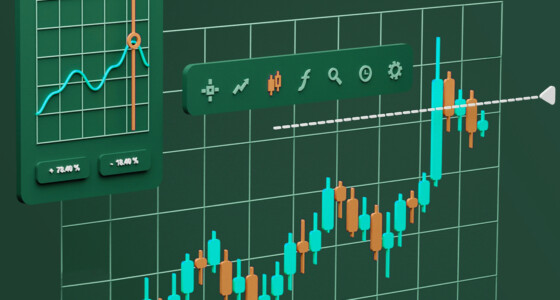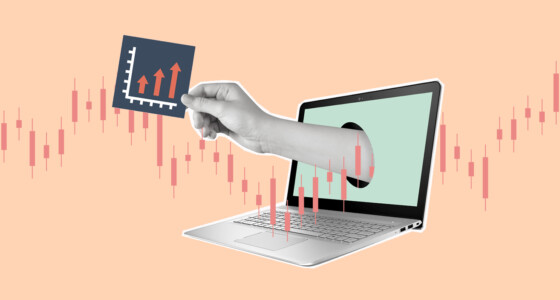

A trend is one of the keys to successful trading. If you can’t determine a market trend, you won’t be able to define entry and exit points.
Could you imagine that although the concept of trends has existed for centuries, modern trend trading was formulated in the 1950s only? It’s theorized that William Dunnigan possibly developed the concept; he was a trader, technical analyst, and writer who had a business cycle forecasting company.
There are some tips that will help you define a trend and its strength correctly. Read on to discover the most effective ways to determine a price direction.
Basics
1. Highs and lows
There are three types of trends: up, down, and sideways. An uptrend is formed when a price forms higher highs and higher lows. A downtrend occurs when a price sets lower highs and lower lows. A sideways movement is represented by almost equal highs and lows.
2. Trendlines
It may be hard to imagine a trend based on highs and lows. Therefore, you should draw a trendline. Every trading platform has a trendline tool, a simple line that you can draw through highs and lows. As soon as you do that, you will see a channel within which a price moves. This channel stands for a trend.
Trend types

1. Market phases
There are three phases of a price movement: upward, correction (sideways trend), and downward. These phases change around. A price can’t reverse immediately. Therefore, there will be a correction between trends. If you see a price moving sideways, it’s more likely to go in the opposite direction of the previous trend. However, it’s not always the case. There can be a correction within a strong trend, but the price will stay within it. Therefore, you should know how to define the strength of a price movement.
2. Trend strength
There can be strong and weak trends. In a strong trend, the price fluctuations are tight, and the market pushes the price so that it doesn’t provide any sign of a possible reversal. In a weak trend, the price moves within wide ranges. There can be pattern and indicator signals of the price reversal.
As a trend is weak, it’s more likely the price will change its direction soon. However, you should also be aware that there can be price correction with a trend continuation. Here, you should check whether the price volume is high and if fundamental factors can support the price movement in the same direction.

Technical tools
1. Support and resistance
As a trend is determined by highs and lows, you can identify a trend reversal based on a breakout. Draw trendlines through maximums and minimums. If the price stops forming higher lows and falls below the previous low, you can expect a trend reversal. Also, when a price rises above the previous high, you can expect a change in the price direction.
2. Technical indicators
There are technical trend indicators. They allow you to determine the direction of a current trend, a price reversal, and the strength of the trend. Technical indicators are the most effective trading tools that provide highly accurate signals. The most popular indicators of a trend direction are moving average, relative strength index, MACD, and Bollinger bands. You can try other technical tools that will help you define the strength of a trend. The key strength indicators are the average directional index (ADX), true strength index (TSI), and Ichimoku Kinko Hyo.
3. Chart patterns
Another way to determine a trend is by using candlestick or chart patterns. There can be continuation and reversal patterns. To define the direction of an upcoming trend, you should look for reversal ones that predict a change in a price direction. The most effective chart patterns are double and triple top/bottom, head and shoulders, inverted head and shoulders, and rising and falling wedges.
You can also apply candlestick reversal patterns, including a hammer, hanging man, engulfing, and harami. However, you should use them in combination with reliable technical indicators, as this type of pattern is less reliable and can occur within short-term price corrections.
To sum up
Trends are part of the foundation of trading. If you fail to find a trend on a price chart, you will likely lose. Although it’s not hard to define a trend, you should be equipped with knowledge about its strength and types and use tools that will help you determine its direction.








